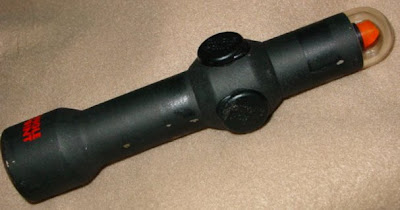Marine spar varnish as a rifle stock finish
I refinished a rifle stock with spar urethane. Why? The idea was to produce a waterproof stock, for use on a go-anywhere utility rifle. While there are good synthetic stocks
How does it look? You be the judge. I used satin finish varnish for less shine afield, and I think it looks nice. Odd, but nice. The thickness of the finish reminds me a little of bowling pins, but otherwise it looks all right. We'll see how it looks after being knocked about outdoors for a while.
When I was already more than half done with this project, it occurred to me that maybe I was going about this wrong. Many years ago, the best-finished stocks had finishes of deeply soaked-in linseed oil
Finally the gunstock comes from the machines completely shaped and with every cut and every hole exactly like those of every one of its mates and stacked with twenty five to fifty others in a rack on an electric truck it goes for a bath of several hours in hot linseed oil. After it has absorbed about quarter of a pound of oil it goes to the staining room...
It was only after this process gave way to more modern (quicker and cheaper) finishing methods that people started complaining about their stocks misbehaving in wet weather. At least, I do not recall seeing, in old time shooting literature, concern expressed about the problem. It could be the old timers had a problem and didn't know it. Or it could be there was mention I overlooked, but it's my impression that the fit of the stock to the metal shifting around in wet weather is a modern concern.
Very likely the problem here is the modern finishing method that leaves the wood inside the stock raw and unfinished and puts a pretty coating on the outside. This is the way the factories have finished most wooden stocked rifles for the last fifty years or more.
It seems to me that the oil soak method likely works about as well as encapsulating the wood in a plastic based spar varnish, and looks more traditional, to boot. But, as I say, I didn't think of that in time, this time.



hi klonk
ReplyDeletenice blog you have here :)
Strange
Thanks for ones marvelous posting! I seriously enjoyed reading it, you might be a great author.
ReplyDeleteI will make certain to bookmark your blog and will eventually come
back down the road. I want to encourage you continue your great work, have a
nice evening!
my web page - cachorro apartamento
Thanks for the info on the spar urethane. I am reworking an old stock that had been broken in two through the wrist & trigger. Those cousins can be rough on your guns,Ha!, This method of as you say, bowling pin finish, will be just the ticket for this project. Thanks again & good refinishing.
ReplyDeleteOughta work well for that. What some people will do is drill and install very long screws or glued in dowels through the broken wrist section to reinforce it.
DeleteBe sure to tell Cuz that he is supposed to shoot the bear, not whack it with the butt end of the rifle.
Best,
KB
This is my very first time that I am visiting here and I’m truly pleasurable to see everything at one place.Gun Mann
ReplyDelete